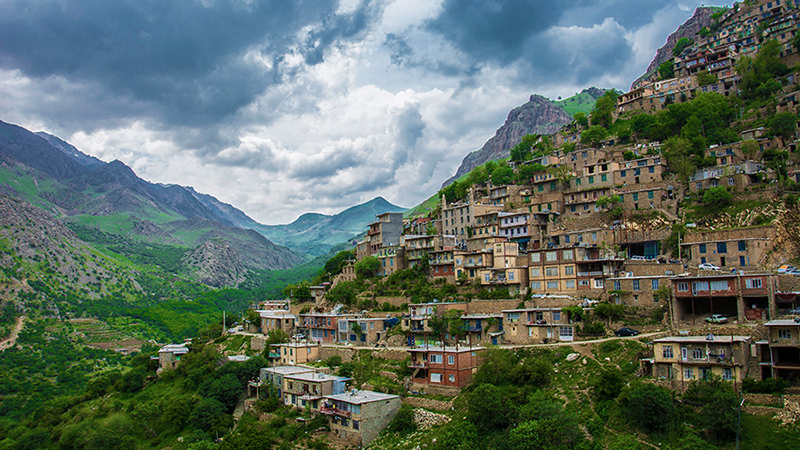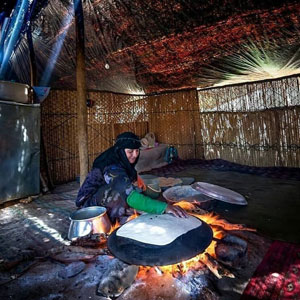 Signin with Google
Signin with Google Signin with Facebook
Signin with Facebook Places
PlacesA Mountainous Heaven Named Hawraman

Uramanat, Manifestation of Kurdish Cultural Heritages
Meandered roads passing through green valleys of the Zagros Mountain get you to a heavenly spot, Uramanat. This beautiful and historic village built at the steep slopes, among oak and walnut forest has a unique architecture and culture that made it one of the UNESCO World Heritage Sites.
Hawraman, the ancient home of Kurds
Uraman Takht, Hawraman or Oraman is a vast mountainous region located between Iran and Iraq. The main part of Hawraman extends nearly 60 kilometres in the west of Iran, within Kermanshah and Kurdistan provinces. It is located between Marivan City and Sirvan River, overlooking the Takht Mountains. Founded archaeological evidence and stone tools in Dārāi Rockshelter, Quri Qaleh or Sar Cham proved that this region had been the homeland of Kurds for centuries. The Inscription of the Assyrians King Sargon II near Tang-i Var Village and the founding documents from the Parthian and Seleucid eras show the strategic importance of this land.
Stair stepped architecture
It is said that Kurds are the descendant of the great Median nation and Cyrus the Great, the founder of the legendary Achaemenid Empire, was the son of this brave nation. Kurdish habitants of Uraman are a semi-nomadic ethnic group, migrating seasonally in the highlands and deep valleys. To adapt their lifestyle to the rough mountains, they build their homes with a unique idea. They used local simple materials of woods and dry-stones to build their houses with the steep-slope plan. Their terraced houses are arranged in a way that the courtyard of the upper house is the roof of the lower house. Some present houses in the village were built about nine centuries ago and surprisingly are still up and erect. These tiered houses mostly have two storeys. The lower one is the place for keeping livestock and the upper floor for the family. Besides cattle breeding, Uramani people also do gardening and agricultural activities. Due to the scarcity of productive fields, villagers adapted the steep-slope agriculture method to plant wheat, lentil, and various orchard trees mainly pomegranate, walnut, and grapes.
Uraman, the land of Ahura
During its long history, Uramanat was considered a holy place and pilgrimage site. Actually, the Kurdish term Uraman Takht literally means "the place of Ahuramazda." Ahuramazda is the word for God, the creator, in Zoroastrian ancient religion. The remnants of several fire temples in the region indicates the importance of this spot for religious reasons.
Hawraman still is an important religious site even after the advent of Islam. In the ancient mosque of the village, there is an antique Holy Quran written on gilded leathers in Kufic script.
The tomb of Pir Shalyiar, a Zoroastrian Celestial preacher, is a creditable site. To commemorate him, big festivals are held twice a year at his tomb. One falls on the 5th of May known as "Kumsa" and the second ceremony, "Aroosi Pir Shahriar", is held on the 30th of January and lasts for three weeks. In both ceremonies, the pilgrims get together and play musical instruments like Daf, sing and perform Kurdish dance.
Nowruz in Uramanat
Like every other part of Iran, Nowruz is the most important celebration among Kurds. For them, Nowruz is synonymous with freedom and deliverance from oppression and cruelty. They relate this splendid ceremony to the mythological hero, Kaveh who rose against the tyrant king of the time, Zahhak.
Besides the common rituals, people in Uramanat used to light a fire on top of the surrounding hills on rooftops at the night before the beginning of the Persian New Year. They dance around the fire and enjoy happy hours with family and friends. Symbolically, they burn all negative energies and obsolescence and prepare themselves for beginning a joyful year.
The ongoing Kurdish heritage
Hawraman manifests genuine Kurdish legacies in different aspects of life, literature, and music. From zealous & brave character to language and clothing style. Like their fathers, They speak the Gorani language with the Hawrami dialect and wear "Cilî Kurdî", the traditional clothing.
Traditional clothes for men include a collarless coat, baggy trousers fitted in the ankle part and a shirt. They use a long sash to wrap the waist and wear their traditional shoes, Klash. Kurdish men also put a hat or a tattersall scarf around their heads.
Hawrami women generally wear colourful clothes adorned with sequins and beads. Women wear a gown with long sleeves and a short dark vest or long-sleeved jacket on top. To cover the head, they usually use beautiful Kurdish hats or loose light scarves.
Natural beauties of Uraman
Along with cultural and architectural beauties, Uramanat is an attractive natural spot. So many springs, like Bil Spring, and rivers like Sirwan, the tributary of the Tigris, made a fresh green face of this part of the earth. Oraman is also inhabited by diverse local fauna. The brown bear, the Persian leopard, wild goat, the wolf could be seen in the region, especially throughout the protected areas of Buzin and Markhil at the southwest of Hawraman.
Terraced architectural fascinations, numerous cultural anchors, and flawless natural attractions made UNESCO inscribe the "Cultural Landscape of Hawraman/Uramanat" as a World Heritage.
By Samaneh Zohrabi / TasteIran



